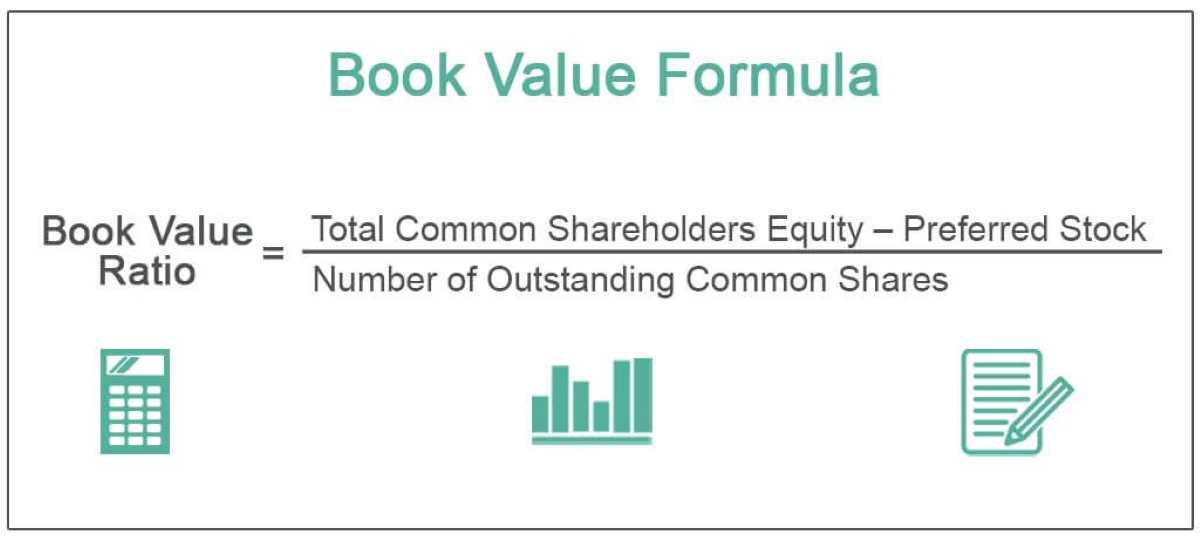
As a company’s potential profitability, or its expected growth rate, increases, the corresponding market value per share will also increase. Aside from assets related to the production of a product, any equipment used to create the product can be included as well. This can include any tools or machinery required to complete production, as well as any real estate owned and used for the purposes of production. Additional business equipment, such as computers and filing cabinets, may also be considered tangible assets for the purpose of valuation. An organization’s tangible assets can include any physical products the company produces, as well as any materials used to produce them.
Tangible Book Value Per Share (TBVPS): Definition and Formula
A company’s stock is considered undervalued when BVPS is higher than a company’s market value or current stock price. If the BVPS increases, the stock is perceived as more valuable, bookkeeping and accounting articles and the price should increase. Tangible book value per share thus focuses solely on the value of an organization’s tangible assets, such as buildings and equipment.
The Formula for TBVPS

Why this is so important to investors is because it provides a concrete knowledge of a company’s value if all its assets were to be liquidated and all liabilities settled. Common shareholders are at the bottom rung when it comes to payout in the event of liquidation of an organisation. Thus, its book value portrays the amount such investors ought to receive at any point in time. If quality assets have been depreciated faster than the drop in their true market value, you’ve found a hidden value that may help hold up the stock price in the future.
- A metric that investors use with regard to book value is BVPS or Book Value of Equity per Share.
- Comparing BVPS to the market price of a stock is known as the market-to-book ratio, or the price-to-book ratio.
- BVPS is more relevant for asset-heavy companies, such as manufacturing firms, where physical assets constitute a significant portion of the balance sheet.
- You can use the book value per share formula to help calculate the book value per share of the company.
Deceptive Depreciation and Book Value
Price-to-book (P/B) ratio as a valuation multiple is useful when comparing similar companies within the same industry that follow a uniform accounting method for asset valuation. It can offer a view of how the market values a particular company’s stock and whether that value is comparable to the BVPS. Despite the increase in share price (and market capitalization), the book value of equity per share (BVPS) remained unchanged in Year 1 and 2. We’ll assume the trading price in Year 0 was $20.00, and in Year 2, the market share price increases to $26.00, which is a 30.0% year-over-year increase. BVPS represents the accounting value of each share based on the company’s equity, while the market value per share is determined by the stock’s current trading price in the market.
What Is Book Value Per Common Share?
The Book Value Per Share (BVPS) is the per-share value of equity on an accrual accounting basis that belongs to the common shareholders of a company. Book Value Per Share is calculated by dividing the total common equity by the number of outstanding shares. Book value per share is just one of the methods for comparison in valuing of a company. Enterprise value, or firm value, market value, market capitalization, and other methods may be used in different circumstances or compared to one another for contrast.
Example of BVPS
For instance, banks or high-tech software companies often have very little tangible assets relative to their intellectual property and human capital (labor force). These intangibles would not always be factored in to a book value calculation. To calculate the book value per share, you must first calculate the book value, then divide by the number of common shares. Also, since you’re working with common shares, you must subtract the preferred shareholder equity from the total equity.
Investors can calculate valuation ratios from these to make it easier to compare companies. Among these, the book value and the price-to-book ratio (P/B ratio) are staples for value investors. Now, let’s say that XYZ Company has total equity of $500,000 and 2,000,000 shares outstanding. In this case, each share of stock would be worth $0.50 if the company got liquidated.
However, for sectors like technology and pharmaceuticals, where intellectual property and ongoing research and development are crucial, BVPS can be misleading. Investors use BVPS to gauge whether a stock is trading below or above its intrinsic value. Book value example – The balance sheet of Company Arbitrary as of 31st March 2020 is presented in the table below. For instance, if a piece of machinery costs Rs. 2 lakh and its accumulated depreciation amount to Rs. 50,000, then the book value of that machinery would come about to be Rs. 1.5 lakh. InvestingPro offers detailed insights into companies’ Book Value Per Share including sector benchmarks and competitor analysis.
Preferred stock is usually excluded from the calculation because preferred stockholders have a higher claim on assets in case of liquidation. A P/B ratio of 1.0 indicates that the market price of a share of stock is exactly equal to its book value. For value investors, this may signal a good buy since the market price generally carries some premium over book value.
